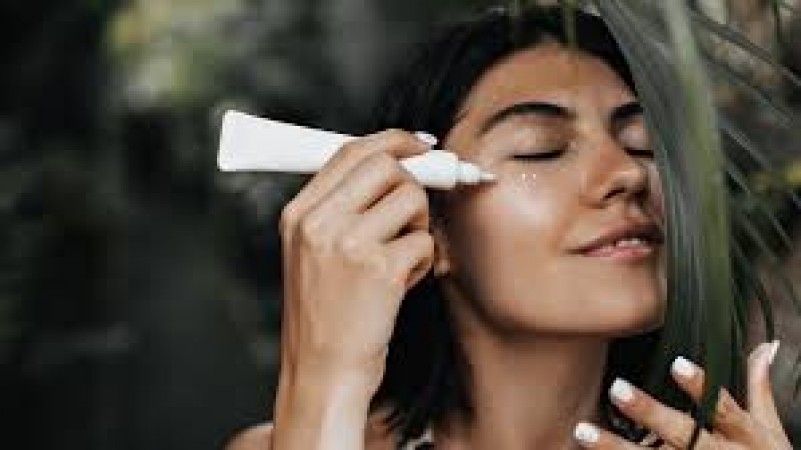
Sunscreen has long been hailed as a defender against the sun's harsh rays, but questions persist about its effectiveness and potential harm. Let's delve into the science behind sunscreen to uncover whether it truly shields us from the sun's powerful ultraviolet (UV) radiation or poses risks to our skin.
The Role of Sunscreen: Blocking UV Radiation
Sunscreen works by forming a protective barrier on the skin, either absorbing or reflecting UV radiation. There are two main types of UV radiation: UVA and UVB. UVA penetrates deep into the skin and contributes to premature aging, while UVB primarily affects the outer layers and causes sunburn. Effective sunscreens protect against both types of radiation, reducing the risk of sunburn, skin cancer, and premature aging.
SPF: Understanding Sun Protection Factor
SPF, or Sun Protection Factor, is a measure of a sunscreen's ability to block UVB rays. The higher the SPF value, the greater the protection. SPF 15 blocks approximately 93% of UVB rays, while SPF 30 blocks about 97%. Contrary to popular belief, higher SPF values do not provide exponentially greater protection; SPF 30 is generally considered adequate for daily use, but reapplication is crucial for prolonged sun exposure.
Debunking Common Myths: Separating Fact from Fiction
Despite its widespread use, sunscreen is surrounded by misconceptions. Let's address some common myths:
Myth 1: Sunscreen Prevents Vitamin D Production While sunscreen can reduce Vitamin D synthesis by blocking UVB rays, it does not entirely inhibit production. Sensible sun exposure, coupled with dietary sources of Vitamin D, ensures adequate levels without compromising skin health.
Myth 2: Chemical Sunscreens Are Harmful Chemical sunscreens contain organic compounds that absorb UV radiation and convert it into heat, dispersing it harmlessly. Concerns about potential hormone disruption and environmental impact have been raised, but extensive research supports their safety for most individuals when used as directed.
Myth 3: Sunscreen Is Waterproof No sunscreen is truly waterproof, despite labels claiming otherwise. Water-resistant formulations offer limited protection against sweat and water immersion, but reapplication is necessary after swimming or excessive sweating to maintain effectiveness.
The Sunscreen Dilemma: Balancing Benefits and Risks
While sunscreen provides essential protection against UV radiation, concerns linger regarding potential harm to the skin and the environment. Here are some considerations:
Chemical vs. Mineral Sunscreens Chemical sunscreens contain synthetic compounds like oxybenzone and avobenzone, which absorb UV radiation. Mineral sunscreens, on the other hand, rely on natural minerals like zinc oxide and titanium dioxide to physically block UV rays. Mineral sunscreens are generally regarded as safer for sensitive skin and the environment, but they may leave a white cast and require more frequent reapplication.
Skin Sensitivity and Allergies Some individuals may experience skin irritation or allergic reactions to certain sunscreen ingredients. Patch testing new formulations and opting for fragrance-free, hypoallergenic options can mitigate the risk of adverse reactions.
Environmental Impact The widespread use of chemical sunscreens has raised concerns about their impact on marine ecosystems, particularly coral reefs. Oxybenzone and octinoxate, common ingredients in chemical sunscreens, have been implicated in coral bleaching and DNA damage to marine organisms. Choosing reef-safe sunscreen formulations free of these harmful chemicals helps protect fragile marine ecosystems.
Embracing Sun Protection Wisely
Sunscreen remains a vital tool in our defense against the sun's harmful rays, but informed choices are key to maximizing benefits while minimizing risks. Understanding sunscreen ingredients, SPF ratings, and application techniques empowers individuals to make educated decisions about sun protection. By prioritizing skin health and environmental stewardship, we can enjoy the sun safely while preserving the beauty of our planet.
Stir Erupts Over Insects Found in Noodles at Restaurant in Sehore, Madhya Pradesh
Quench Your Thirst: Must-Have Foods to Keep Your Body Hydrated 24x7 This Summer
Chemical reactions occur in the body after eating some seafoods!